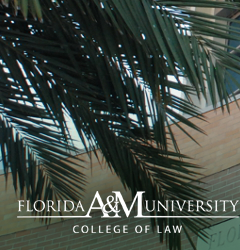Document Type
Article
Publication Date
2013
Abstract
Each year, the United States Supreme Court's docket includes a range of "high profile" cases that attract attention not merely from law professors and others with an acquired fascination with the Court, but also from a general audience of law students, lawyers, scholars and commentators on American politics and society, as well as, occasionally, the public at large. During the 2011 Term, one of those cases was "the GPS case," formally known as United States v. Jones.' Media coverage of the case spread far beyond the legal blogosphere to a wide variety of mainstream and popular sources, both in print and online. Many people who had no familiarity with the legal doctrinal intricacies of Fourth Amendment law nevertheless waited with bated breath to hear what the Court would say about what limitations, if any, the Constitution might place on the authority of the police to use GPS technology for tracking criminal suspects-or, more broadly, the authority of the Government in general to maintain surveillance of the public movements of people in everyday life. When the decision was announced in January 2012, nearly everyone from the layperson reading a news update online to the law professor ready to thoroughly dissect the ramifications of the opinion with a criminal procedure class-was left underwhelmed by the Court's resolution of the case, at least compared to the anticipation beforehand. In two respects, at least, the Court was unanimous and clear: the Defendant's argument prevailed and the Fourth Amendment applied to what the police had done on the facts of the case. Other than that, however, the Court did not provide very much guidance about the Fourth Amendment implications of GPS surveillance or similar tracking technologies in the future. The lack of clarity was particularly acute because the reasoning underlying the Court's holding revealed a 5-4 split among the Justices - a division that differed from the stereotypical perception of the Justices' ideological divides as well as a concurring opinion that seemingly agreed with both of the other two camps while simultaneously staking out a position broader than either. At first glance the three opinions revealed a Court seemingly intent on avoiding the complex and difficult issues of Fourth Amendment rights in a digital, Internet-interconnected age and putting off these tough judgment calls for another case on another day. As is often true of the Court's decisions, though, the reality is more nuanced than initial appearances might suggest. While the opinions in Jones undeniably left open several significant questions for resolution in future cases, they actually provided answers to a number of subsidiary questions. Consequently, it is worth taking the time to carefully consider not only the issues the Jones decision leaves open, but also the questions it answers.
Recommended Citation
Benjamin J. Priester, Five Answers and Three Questions after United States v. Jones (2012), the Fourth Amendment GPS Case, 65 OKLA. L. REV. 491 (2013).
